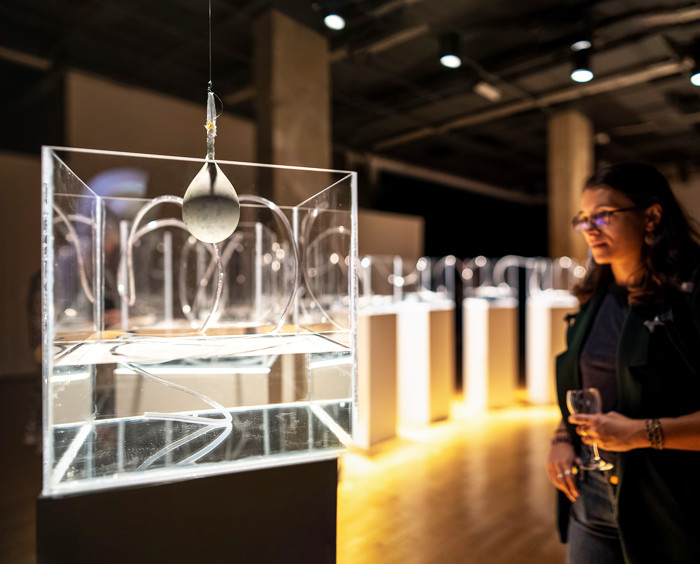Since 2017, over 6,100 Syrian refugees have arrived in Montreal. With her multimedia exhibition, Khadjia Baker puts a name, face, and voice to six of these individuals. Her captivating and powerful audio-visual installation, Birds Crossing Borders, premiered on Sept. 13 at the theatre and gallery, Montreal Arts Interculturels. A Kurdish-Syrian who witnessed the Syrian civil war firsthand, Baker presents a collection of stories from Syrian refugees living in Montreal to chip away at the myth of refugees as radical extremists.
In Birds Crossing Borders, Baker displays the anecdotes and narratives of Syrian men and women new to Canada on three televisions and two projectors of different sizes in a dim gallery. Two of the films, “Powerful women looking for freedom” and “Family of recently arrived refugees,” offered audiences insight into the humanity and wounds of Syrian refugees through first-person storytelling. The short films last anywhere from approximately 13 minutes to an entire hour. Baker creates a moving multi-sensory experience that transports viewers into the lives of each storyteller.
The screens of the installation stand in each corner of the room, alongside plexiglass boxes filled with clear water and tubes that connect each box in the centre.
“The movement of the water through these vessels is a conceptual reflection on displacement and the dynamics of belonging in one’s home,” revealed Baker’s exhibition introduction.
The first box fills up with a red liquid, which slowly passes through each plexiglass box. Using simple objects found in a chemistry lab, Baker comments on the connectedness of human movement and the relationship to new land and new people.
Zain Merhaba, a 27 year-old Master’s student from Aleppo studying childhood education, had one of the most gripping narratives on offer. While other storytellers spoke French or English, Zain told her stories in a Syrian dialect that reminded me of my own Lebanese family, and made her seem familiar. Zain shared her experiences as a school teacher and hospital volunteer during the war, how she looked to children for hope, and the difficulty of having to learn a new language.
As someone who has experienced the effects of displacement—my siblings having been forced to flee Lebanon in 2006 due to military conflict—Zain’s experiences resonated with me. The sense of solidarity I felt was a feeling Baker had set out to evoke.
“[The exhibition] aims to develop healthier relations with displaced people from the Middle East as a way of avoiding social separation and conflict,” Baker’s introduction stated.
The exhibition’s interview storytelling technique offers a unique perspective into the lives of Syrian refugees at a time when their perspectives are often forgotten.
“One-sided images from Western news media intensifies the paranoia around ‘alien newcomers,’” the introduction read.
Baker’s small yet forceful exhibition dismantles barriers created by popular news sources, giving full attention to the Syrian refugees themselves, rather than political sensationalism. Her collection of films showcases a raw and unscripted perspective of these six men and women. The installation takes away viewers’ ability to respond, and instead, it requires that they listen.
Although I experienced Khadija Baker’s Birds Crossing Borders with no other patron in the gallery, it did not feel like I was alone. As a person of Lebanese descent who appreciates the effect that displacement can have on a family, I left the exhibition having been transported somewhere familiar.
Birds Without Borders runs from Sept. 13 to Oct. 13. at MAI. Tickets are free. For more information, go to http://www.m-a-i.qc.ca/event/birds-crossing-borders.








